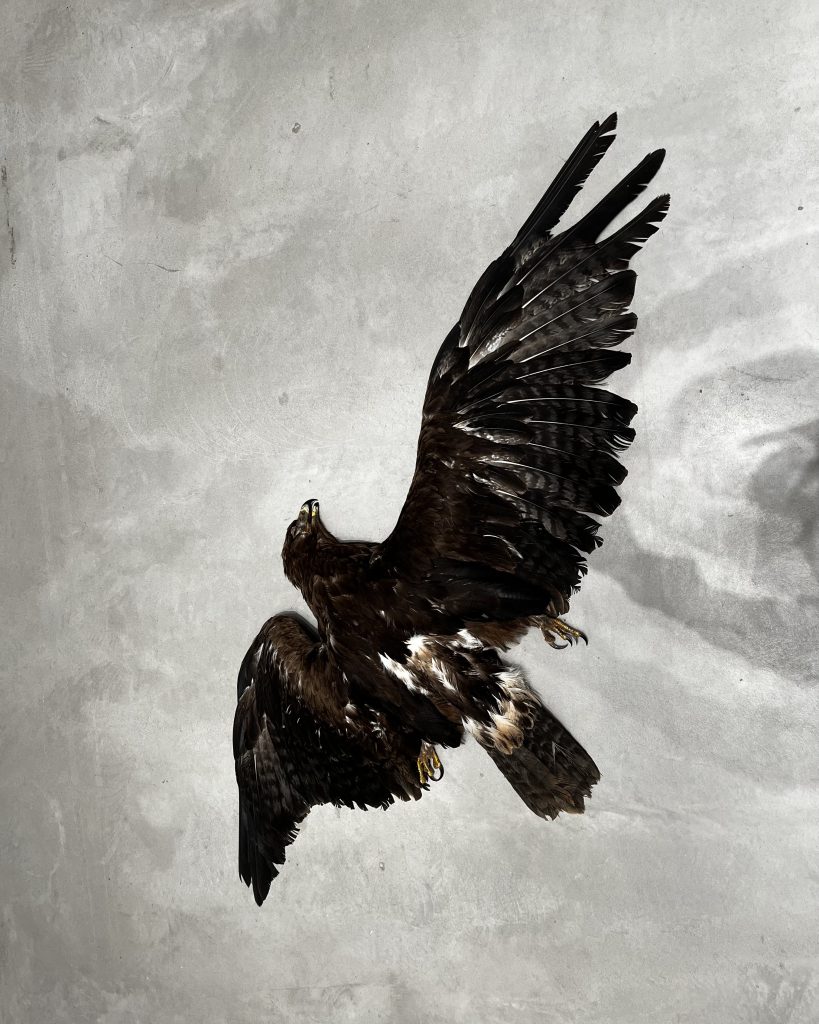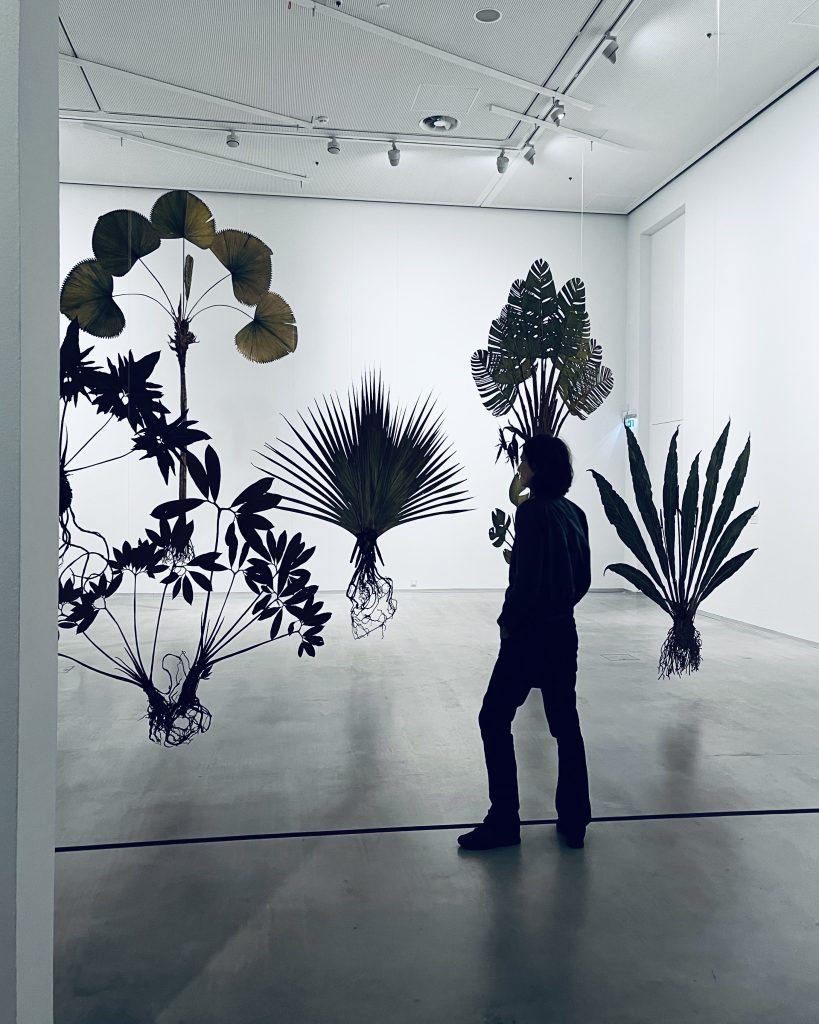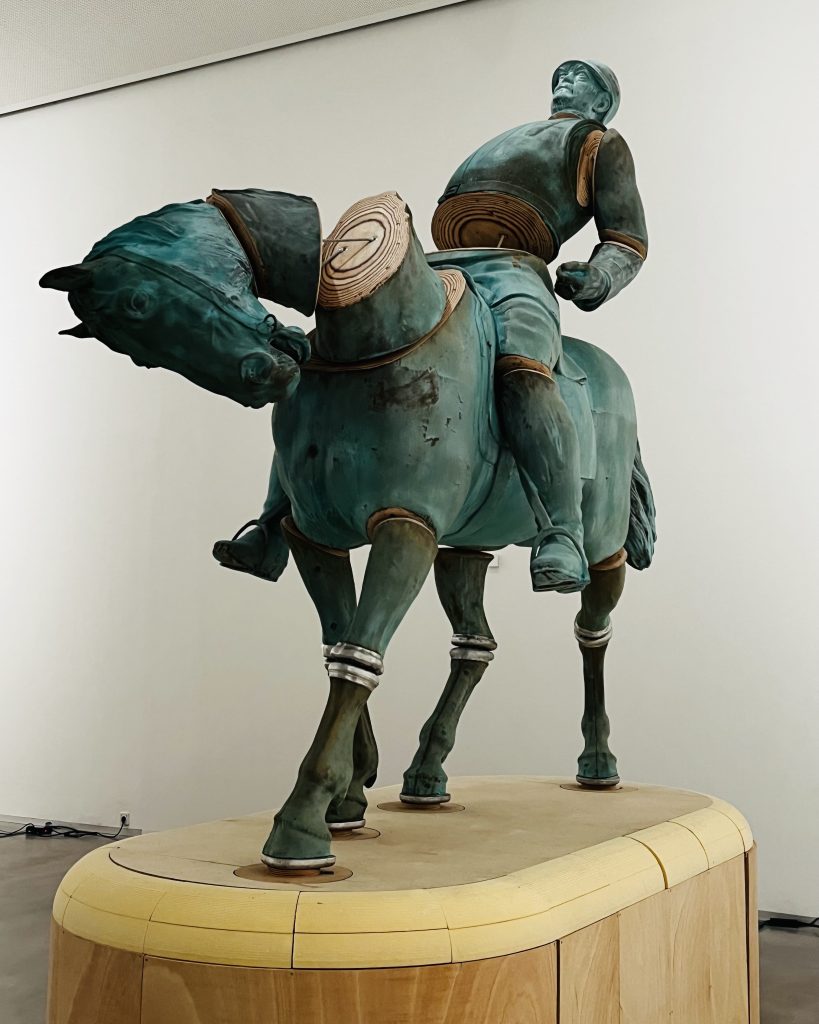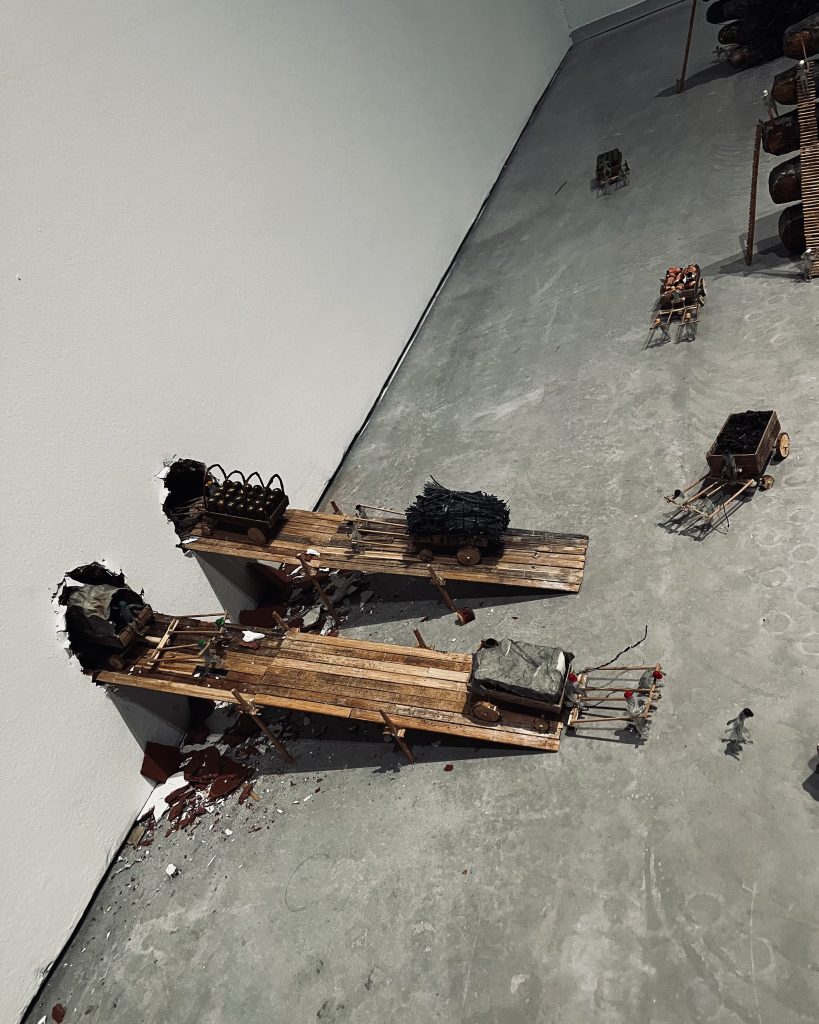Zugegeben, Kunst im Museum fühlt sich so richtig merkwürdig an, wenn man gerade erst von einem Abenteuer in purer, voller Natur zurückgekehrt ist. Echte Natur ist anders, sie läßt sich fühlen, reißt dich körperlich mit, riecht, duftet, und du spürst den Wind um die Nase, in deinen Haaren, kannst vollkommen eintauchen, hast angepackt, dreckige Hände bekommen, Blut und Tränen geschwitzt vielleicht, dich eingelassen und bist anschließend erschöpft im Gras gelandet.
Kunst im Museum, und nun schreibe ich über Julius von Bismarck, *1983 in Breisach am Rhein, Nasan Tur, *1974 in Offenbach und das Künstlerduo Böhler & Orendt, ist anders! Sie ist vielleicht der Wegweiser dafür, es öfter draußen zu probieren als drinnen, oder nur ausschließlich auf der Terrasse des Lieblingscafes zu verweilen, und dem, von Autolärm übertönten, Rauschen der Stadtbäume lauschen zu wollen. Statt nur zu wollen, zu machen! Gerade als Großstädter.
Bei Julius können wir in einem der dunklen Ausstellungsräume auf großen Stoffkissen liegen und dem Bildschirmgeschehen an der Decke folgen: Nahaufnahmen eines Laubbaumes und das Spiel des Windes darin. Je intensiver wir eintauchen, desto mehr schenkt uns die Erinnerung den Geruch dazu.
Dieser Raum bringt in uns herunter, was uns im ersten Raum vielleicht aufgewühlt hat: Ein großer Saal mit weit voneinander platzierten vier toten Waldtieren. Hier stellt Nasan mit seiner aktuellen Ausstellung die Frage in den Raum warum der Mensch tötet? Und wie viel Gewalt der Mensch an sich in sich trägt, die wann wie getriggert sich entlädt oder entladen kann. Zum Akt des Tötens interviewte er Jäger.
Als ehemalige Bundepolizistin, die zwanzigjährig ihren Jagdschein zu machen begonnen hatte, habe ich darauf vielleicht einen Blick wie er verurteilenswürdig für Besucher gerade dieser Ausstellung erscheint. Sehr viel wichtiger erscheint mir daher die Message, dass die stattfindenden Ausstellungen in der Berlinischen Galerie, nach ihrer monatelangen Schließung, gerade aktuell besonders sehenswert sind.
Julius wartet genauso mit Themen auf, die unsere Umgebung, Natur und Tiere betreffen. Metergroße Skulpturen aus Metall, von der Decke hängend und in Form von Pflanzen, so flach, als wären diese für ein Poesiealbum geplättet worden.
Eine lebensgroße Giraffe und eine verkleinerte Version des Reiterdenkmals Otto von Bismarck. Beide „geschnitten“, in Brüchen präsentiert und nicht so ganz im Ganzen gelassen. Uns soll damit unser gespaltenes Verhältnis zur Natur aufgezeigt werden. Wir lieben und nehmen von ihr und lassen sie gleichzeitig gehen? Geh’ doch raus in die echte Natur? Regional, saisonal, zu haben ist was jeweils verfügbar ist und das Leben anderer ist nicht unser Wunschkonzert. Animals are as free as the wind if not held in zoos and stables .. ? What is a happy animal about?
A different approach takes Böhler & Orendt. It’s kind of a very funny atmosphere you’ll enjoy if you enter their two rooms. A apelike man is like in Gulliver’s Travels placed on the ground, fixed with small tools and used as a resource from smaller forces. Loved the fact very much that the museum’s wall got included in the presentation, too.
The scene itself is playful and filled with childish wit and cute irony.
In the second room you’ll be flashed by large paintings in bright colors and leaflike shape, and curious about the exciting object in the middle. Everything is mysterious and tempting. You’ll love to explore, hush-hush get up the stairs! inside the capsule, and start listening amused to the spooky ghostlike chorus, presented by lovely creatures of that you’re invited to walk around them.
Hier wird unsere Erde von Gefahr und Furcht befreit. Beschwörend! Don’t leave! Summer in the city? Not for he, she, me. Naturliebe!











Pacha Mama
Admittedly, art in a museum feels really strange when you’ve just returned from an adventure in pure, full nature. Real nature is different, it can be felt, pulls you along physically, smells, and you feel the wind around your nose, in your hair, can immerse yourself completely, have worked, grabbed, got dirty hands, sweated blood and tears perhaps, let yourself in and landed exhausted in the grass afterwards.
Art in the museum, and now I am writing about Julius von Bismarck, *1983 in Breisach am Rhein, Nasan Tur, *1974 in Offenbach and the artist duo Böhler & Orendt, is different! It is perhaps the request for trying it outdoors more often than indoors, or to linger exclusively on the terrace of one’s favorite café, trying to listening to the rustle of the city trees, drowned by the noise of cars. Instead of wanting to do, to do! Especially as a big city dweller.
Joining Julius‘ art, we can lie on large fabric cushions in one of the dark exhibition rooms, and follow the on-screen action on the ceiling: Close-ups of a deciduous tree and the wind in it. The more intensively we immerse ourselves, the more our memory will give us the smell of it.
This room cools down in us what may have troubled us in the first room: A large hall with four dead forest animals placed far and lonesome from each other. Here, Nasan’s current exhibition poses the question of why man kills? And how much violence man carries in himself, which can be discharged and unloaded when and how triggered. On the act of killing, he interviewed hunters.
As a former federal police officer, who started to make her hunting license at the age of twenty, I might have a view on it as it seems condemnable for visitors of this very exhibition. Much more important to me, therefore, is the message that the exhibitions taking place at the Berlinische Galerie in Berlin, after being closed for months, are especially worth seeing right now.
Julius also offers themes that concern our environment, nature and animals. Meter-sized sculptures made of metal, hanging in the shape of plants from the ceiling, so flat as if they had been flattened for a poetry album ..
A life-size giraffe and a scaled-down version of Otto von Bismarck’s equestrian monument. Both „cut“ and not quite left whole. The intention is to show us our ambivalent relationship to nature. We love and take from it, and at the same time let it go. Why not go out into real nature? Regional, seasonal, to have what ever is available at the time, in your place, and the life of others is not our request programme. Animals are as free as the wind if not held in zoos and stables .. What is a happy animal about?
A different approach takes Böhler & Orendt. It’s kind of a very funny atmosphere you’ll enjoy if you enter their two rooms. A apelike man is like in Gulliver’s Travels placed on the ground, fixed with small tools and used as a resource by smaller forces. Loved the fact very much that the museum’s wall got included in the presentation, too. These two tiny tidy little damages ..
The scene itself is playful and filled with childish wit and cute irony.
And in the second room you’ll be flashed by large paintings in bright colors and leaflike shape, curious about the exciting object in the middle. Everything is mysterious and tempting. You’ll love to explore, rush-rush get up the stairs! inside the capsule, and, hush-hush, start listening amused to the spooky ghostlike chorus, presented by lovely creatures of that you’re invited to walk around them.
Hier wird unsere Erde von Gefahr und Furcht befreit (German. Invited to google!).
Beschwörend! Don’t leave! Summer in the city? Not for he, she, me. Naturliebe!
Berlinische Galerie . Berlin .
Julius von Bismarck . When Platitudes Become Form .
Böhler & Orendt . The Sweet Certainty .
Nasan Tur . Hunted .
For videos about the exhibition, look at the stories on my IG: artis_ceejay